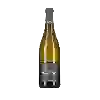
Winery La Ferme Saint PierreSauvignon
This wine generally goes well with vegetarian, rich fish (salmon, tuna etc) or shellfish.
Food and wine pairings with Sauvignon
Pairings that work perfectly with Sauvignon
Original food and wine pairings with Sauvignon
The Sauvignon of Winery La Ferme Saint Pierre matches generally quite well with dishes of rich fish (salmon, tuna etc), shellfish or vegetarian such as recipes of tuna gratin, mouclade or goat cheese and bacon quiche.
Details and technical informations about Winery La Ferme Saint Pierre's Sauvignon.
Discover the grape variety: Dobricic
From the island of Solta off the Dalmatian coast in Croatia. If in France it is almost unknown, in its country of origin it still benefits today from a rescue program. According to genetic analyses carried out in Davis (United States) by the California University, Dobricic is the father of Plavac Mali, the latter being a very well-known quality grape variety in Croatia and other countries.
Last vintages of this wine
The best vintages of Sauvignon from Winery La Ferme Saint Pierre are 2016, 2014
Informations about the Winery La Ferme Saint Pierre
The Winery La Ferme Saint Pierre is one of of the world's greatest estates. It offers 16 wines for sale in the of Vaucluse to come and discover on site or to buy online.
The wine region of Vaucluse
The wine region of Vaucluse is located in the region of Méditerranée of Vin de Pays of France. Wineries and vineyards like the Domaine Chêne Bleu or the Domaine Chêne Bleu produce mainly wines red, white and pink. The most planted grape varieties in the region of Vaucluse are Viognier, Merlot and Cabernet-Sauvignon, they are then used in wines in blends or as a single variety. On the nose of Vaucluse often reveals types of flavors of earthy, blueberry or dried herbs and sometimes also flavors of savory, anise or cinnamon.
The wine region of Méditerranée
Méditérranée is a PGI title that covers wines produced in a large area of the South-eastern coast of France, roughly corresponding to the wine region of Provence but also including Part of the Rhône Valley. The PGI shares its territory with multiple AOC appellations as varied as Châteauneuf-du-Pape, Bandol and Côtes de Provence. The PGI Méditérranée catchment area extends over 10 departments (including the two on the island of Corsica), as well as smaller parts of the Isère, Loire and Rhône departments. Viticulture is essential to the culture and economy of this part of France.
The word of the wine: Groslot
See grolleau.














